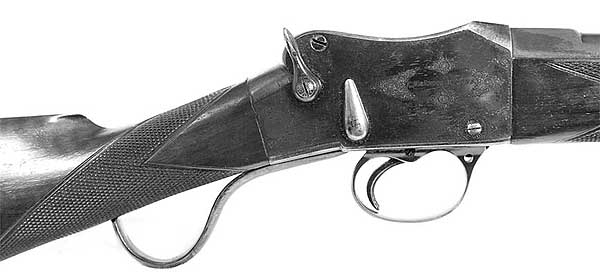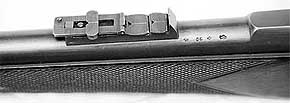THE TOP END IN THE FIFTIES
by
John Corcoran
About 1953 while in Adelaide on my way to work as a ringer on Willeroo Station, near Katherine, in the Territory, I took the tram out to Percy Street, Prospect, to buy some gear from R. M. Williams. He happened to be there when I arrived and, as was his custom, showed me around his workshops.
When I told him I was heading up to Willeroo he asked me if I had a suitable pistol to handle scrub bulls, if needed. At the time I only had a Beretta 9mm Corto (short) semi automatic which was not very effective. R.M. pulled out a large wooden box, filled with handguns, from under a work bench and we hunkered down and sorted through them. I selected a .455 calibre Colt Model 1917 New Service revolver, a choice very much endorsed by R. M. The cost of the Colt was £15-0-0 and with other gear I had bought I owed about £25-0-0. Although I had enough cash, I wanted to keep a bit spare until I got to Katherine and R.M. immediately suggested I hold back £10-0-0 and post it after I got to Willeroo. We shook hands on the deal and I sent the money down a couple of weeks later.
In those days in the Top End the horse was king on cattle properties, there was no network of beef roads, no road trains, and no helicopters or motor bikes were used on the stations for handling cattle. Much of the country was unfenced and the cattle were worked and moved on the hoof in much the same way as from the time of early settlement. Manbulloo, for example, was a Vesty’s property, about 7000 square miles, which included the out stations of Willeroo, Delamere and Birrimbah, over on the Dry River Road. To take a mob from Newcastle Waters over to Dajarra in Queensland, (Dajarra was the rail head where the cattle were trucked and was a branch line from Duchess, near Mt. Isa), was about 3 months on the road, while bringing a mob over from the Kimberley was a 6 months droving trip.

I used this Colt for a number of years in the Territory and at one stage had a pair of checkered walnut grips made for it at Mick Smith’s Gun Shop in Sydney. Eventually, when I joined the N.S.W. Police Force in 1957 I passed the Colt on to a ringer mate, although, after being issued with a .32 calibre Browning semi automatic, I would rather have kept the Colt, had that been possible.
Many years later my mate was head stockman on Manbulloo station, near Katherine, mustering wild cattle, when a bull kept charging out of the mob, attacking the stockhorses. When he shot the bull, the horse, which wasn’t used to being shot off, dropped its head and tried to get rid of the rider. My mate jammed the pistol back into the holster and by the time he had control of the horse and the dust had settled, the pistol had been lost. The stock camp back-tracked looking for it, but had no luck. This incident happened on the eastern side of the King River, northeast of Cowai waterhole. This is limestone country, so maybe, one day, a weathered New Service revolver, with vestiges of walnut grips, will be found in a rocky crevice and end up in the collection of an ACANT member!
All stations and stock camps had firearms. They were just another necessary tool to be on hand when needed, for unmanageable scrub bulls, killers, and injured cattle or horses. The most common longarms in use were SMLEs, and 1892 Winchesters, usually in .44/40 calibre. There was an assortment of handguns, including Colt New Service and Webley, with a sprinkling of war souvenirs, such as Lugers and Broomhandle Mausers.
At that time in Australia, because of import restrictions on firearms, there were many black powder cartridges still in use, for example .25/20, .32/20, .38/40 and .44/40, which were generally manufactured and sold in either black powder or equivalent smokeless powder loads. Certainly the most common rifle or carbine in the bush was the Winchester Model 1892.
One time when in Sydney, I purchased a very fine Martini sporting rifle, made by Isaac Hollis of London, in .577/450 calibre. I was impressed by this cartridge, a 480 grain projectile, with a load of 85 grains of black powder, compared with the .44/40, with a 40 grain load. Kynoch produced the .577/450 in packets of 10, black powder cartridges were in a green and red packet and smokeless were in a yellow and red packet.

When I used the Martini in the bush I had sense enough to realise it was very special and would clean it religiously each night after shooting, using the 5-piece cleaning rod from the butt trap and BurrsThreo gun oil. It was this rifle which started my interest in percussion and early breech loading single shot rifles. In 1957 I sold it to another collector just before Margaret and I were married, and after many fretful nights, was able to buy it back some years later.

Here are some details of the firearm:-
Hollis Martini Henry sporting rifle, calibre .577/450, overall length 42 inches, barrel length 25½ inches, weight 7¼ pounds, blued finish, with the exception of the lever, which is colour case hardened. Serial number 18787 stamped on underside of action in front of trigger guard. Express sights as shown, safety lever on right side of action, barrel stamped I Hollis & Sons London. Right side of action engraved I Hollis & Sons. The 5-piece cleaning rod, which resides in the butt trap, is 30 inches long assembled.
One of the Hollis photos shown above was taken about 1954, on Mt. Bundy, near Adelaide River, a buffalo lease then owned by the Perrett family. The photo below shows some typical ringer’s gear - |
 |
the spurs are Wave Hill spurs, made by Fred Gutte, who was the blacksmith on Wave Hill station in the 1950s.
